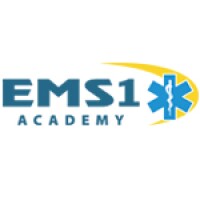The EMS1 Academy features " Module 6: Documentation,” a 1-hour accredited course for paramedics. Complete the course to learn skills that should be used to handle EMS documentation. Visit the EMS1 Academy to learn more and for an online demo.
Have you experienced the problem of changing file names during collaborative review and revision of a single document?
The back and forth string of emails usually reflects a growing complexity and confusing file naming extensions. Too often it looks something like this:
- Original document: Class Syllabus Draft.docx
- Reviewer 1 comments: Class Syllabus Draft G Friese Comments 9 15.docx
- Document with Reviewer 1 revisions: Class Syllabus Final Fall Semester.docx
- Reviewer 2 comments on original document: Class Syllabus Comments Rom Duck Course.docx
- Final document: Class Syllabus Final FINAL Fall Semester.docx
- Reviewer 2 points out that not all revisions are in the Final FINAL document: Class Syllabus Final FINAL Fall Semester updated.docx
Google Docs for training
With each document exchange, even when using track changes, comments and revisions are missed or repeated. I have grown impatient with using multiple files to craft a single document through a cycle of revisions. As often as possible I am using Google Docs for collaborative document creating, editing and sharing. Some of my recent uses include:
- Gathering material from writers for reaction to a recently conducted survey.
- Planning the development of a series of online training courses.
- Outlining presentation content for an industry conference with a co-presenter.
- Comparing the products of several similar vendors.
Google Docs, Sheets and Slides are also available from anywhere I access the internet. I can view and edit documents from my laptop, tablet and smartphone. Changes are saved immediately and show in real time to other document collaborators.
Rom Duckworth, a public safety education and training idea machine, explained to me how he creates a Google Doc for each lecture. He shares a link to the document with his students. As he lectures students can add notes to the document, continue to edit the document as they read the chapter and return to the document as they study for an exam. The lecture document is a collaborative learning tool.
Dropbox and Box have the functionality to share the same file with many users.
Google Sheets for training
My favorite Google Sheet feature is to create Forms which allow others to enter data into the spreadsheet. The form can be accessed through a link or embedded on a blog or website.
Consider using a Google Sheet form for a CE activity roster. As students enter the classroom they use a laptop or tablet to enter their name, employee ID and date into a form. Upload the resulting spreadsheet to a CE tracking system or learning management system.
At the end of the training activity, email each student a link to a form that is a survey with rating scales and multiple choice answers. Each new submission creates a spreadsheet row for later review, analysis and sorting.
Forms can also be used for submitting homework assignments. Use free-text fields for students to submit answers to short-answer questions. Alternatively, ask students to share the link to their Google Doc homework assignment with you.
How are you using Google Docs, Sheets or Slides as an educator, training administrator or student?













